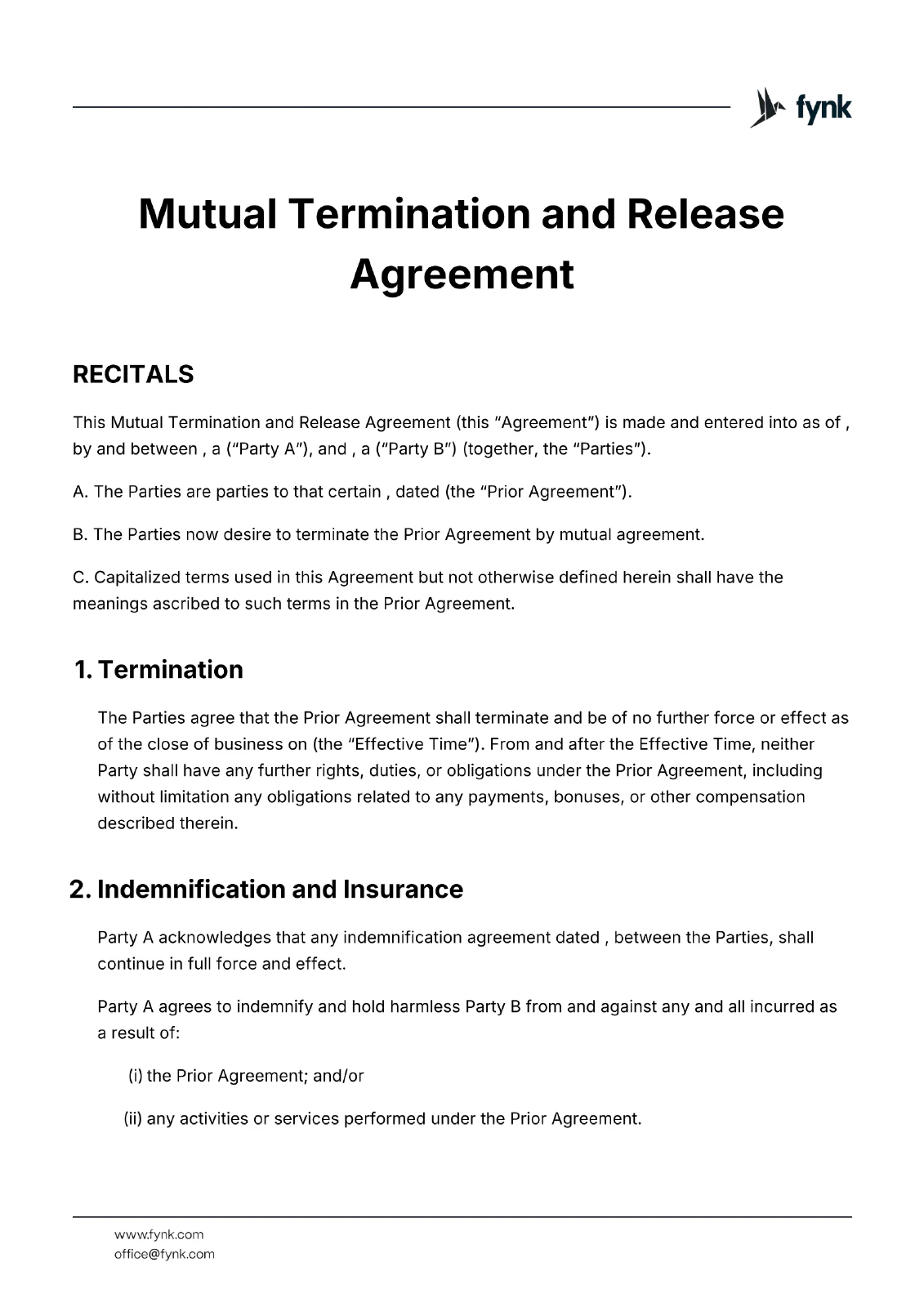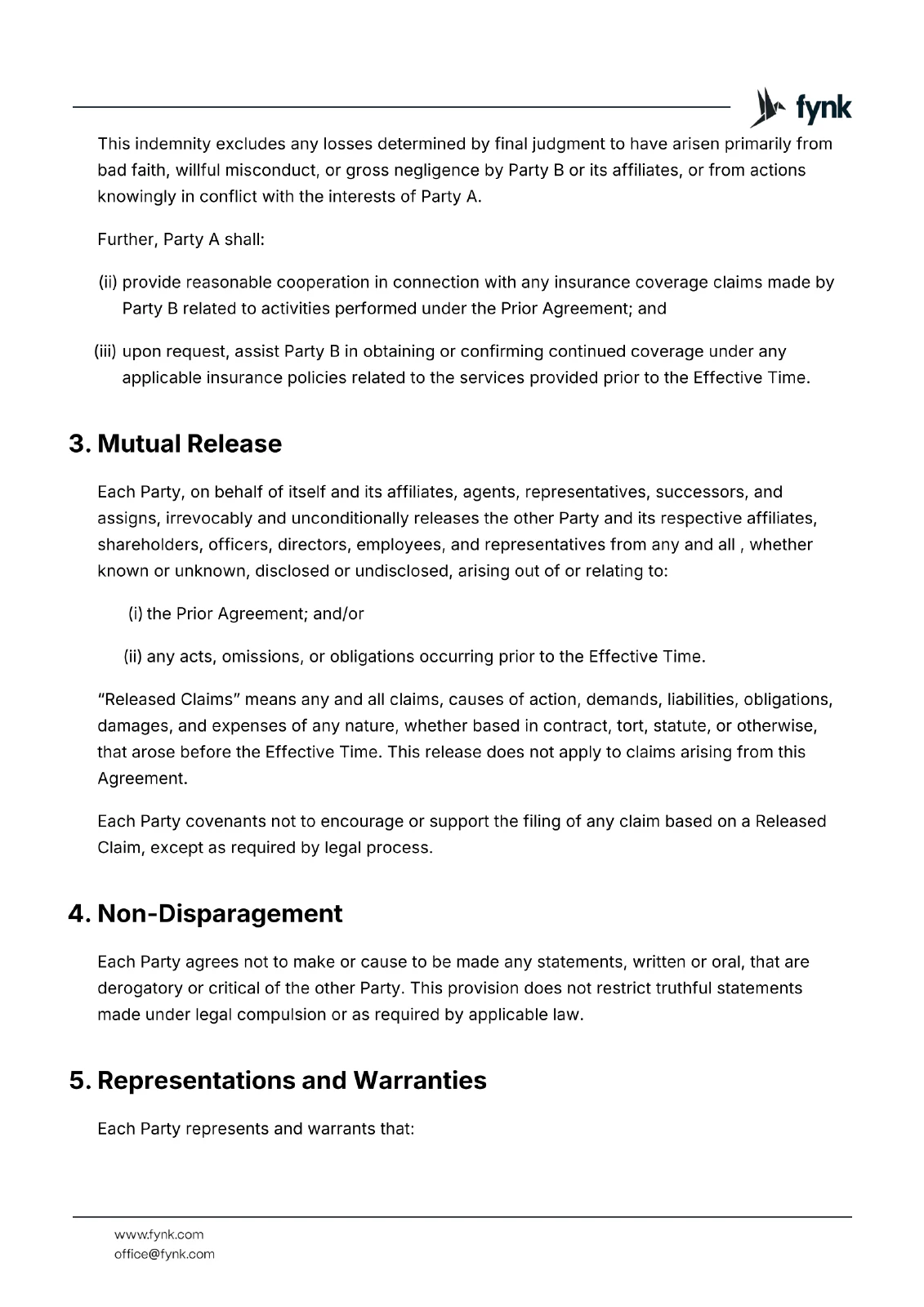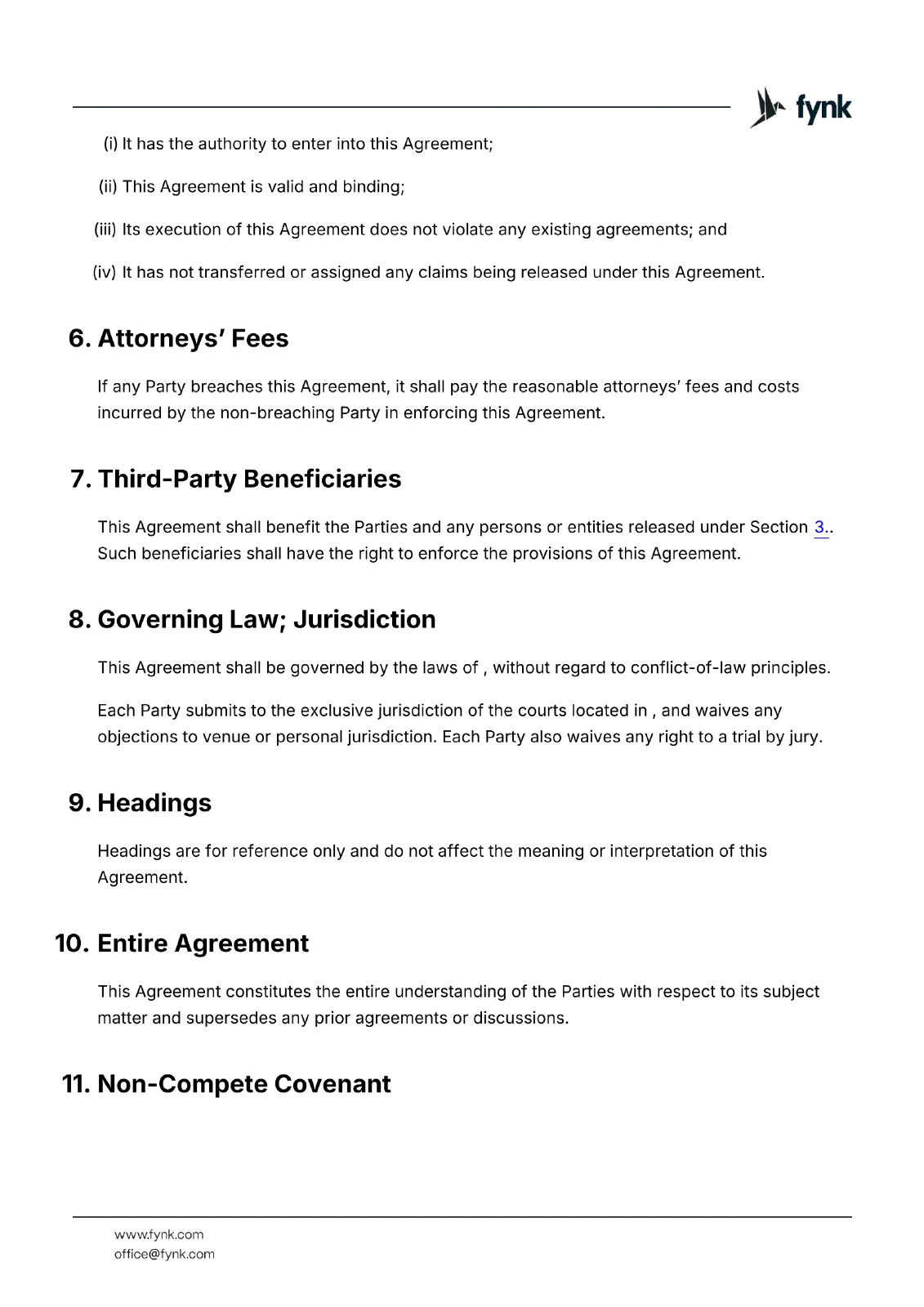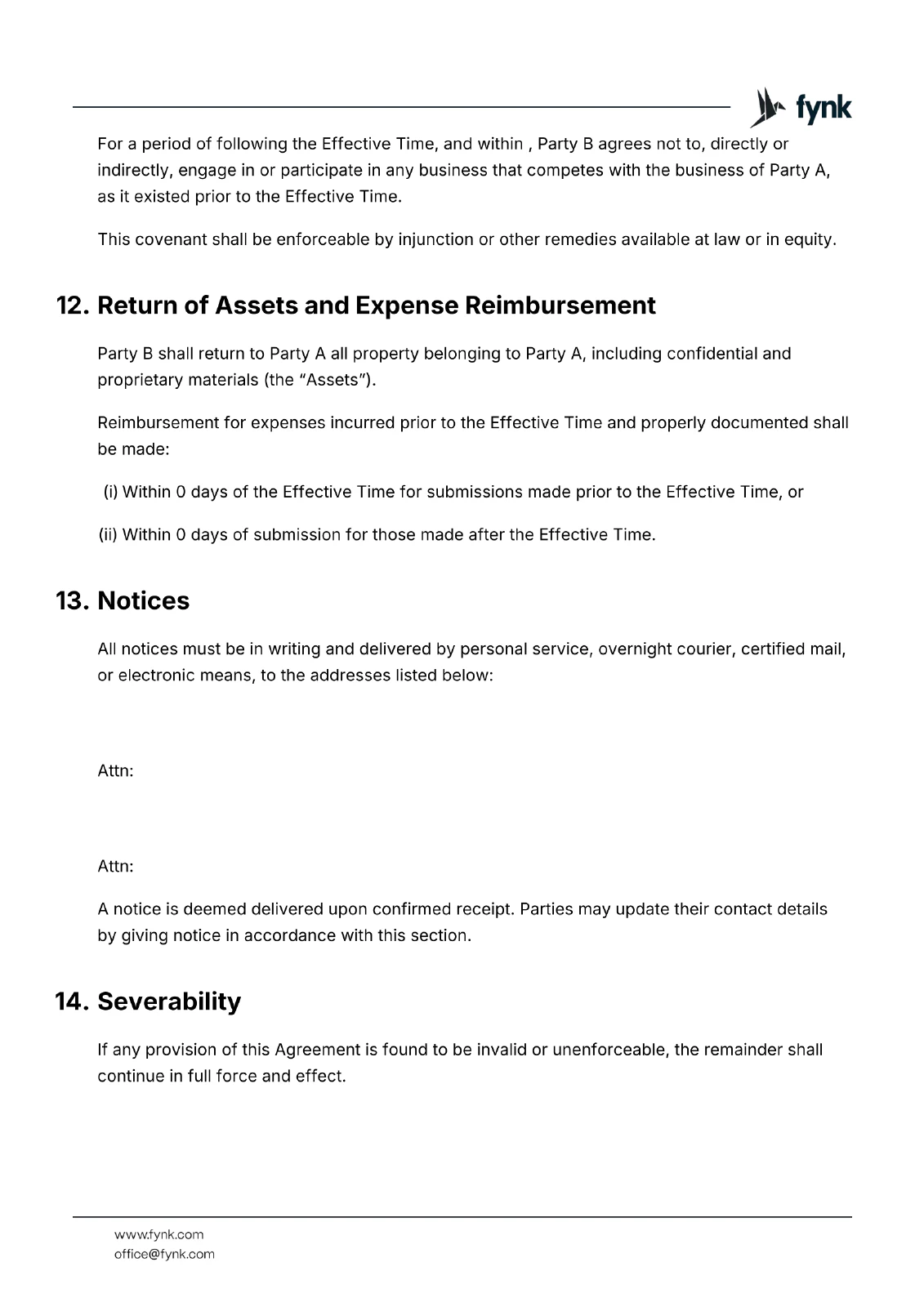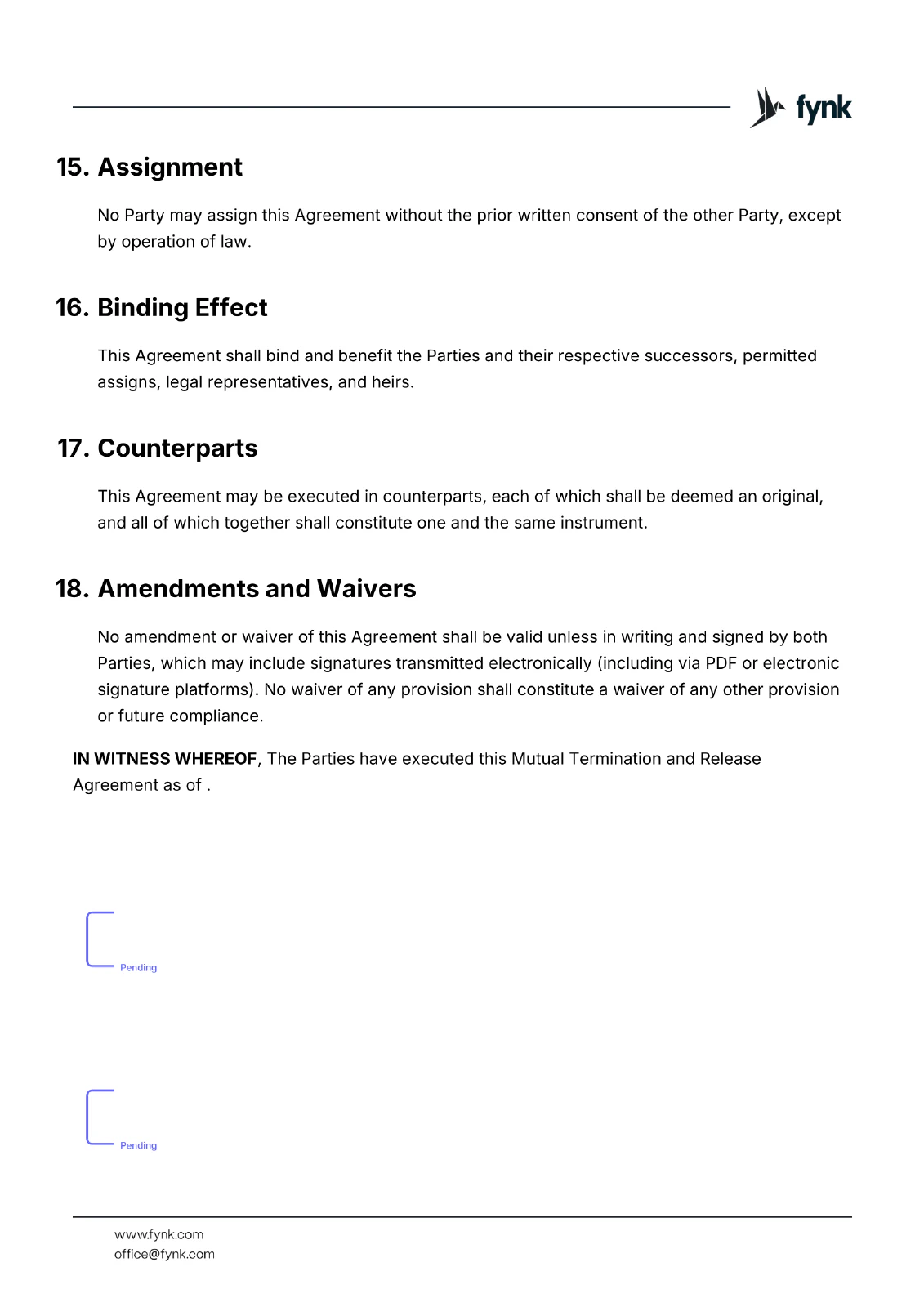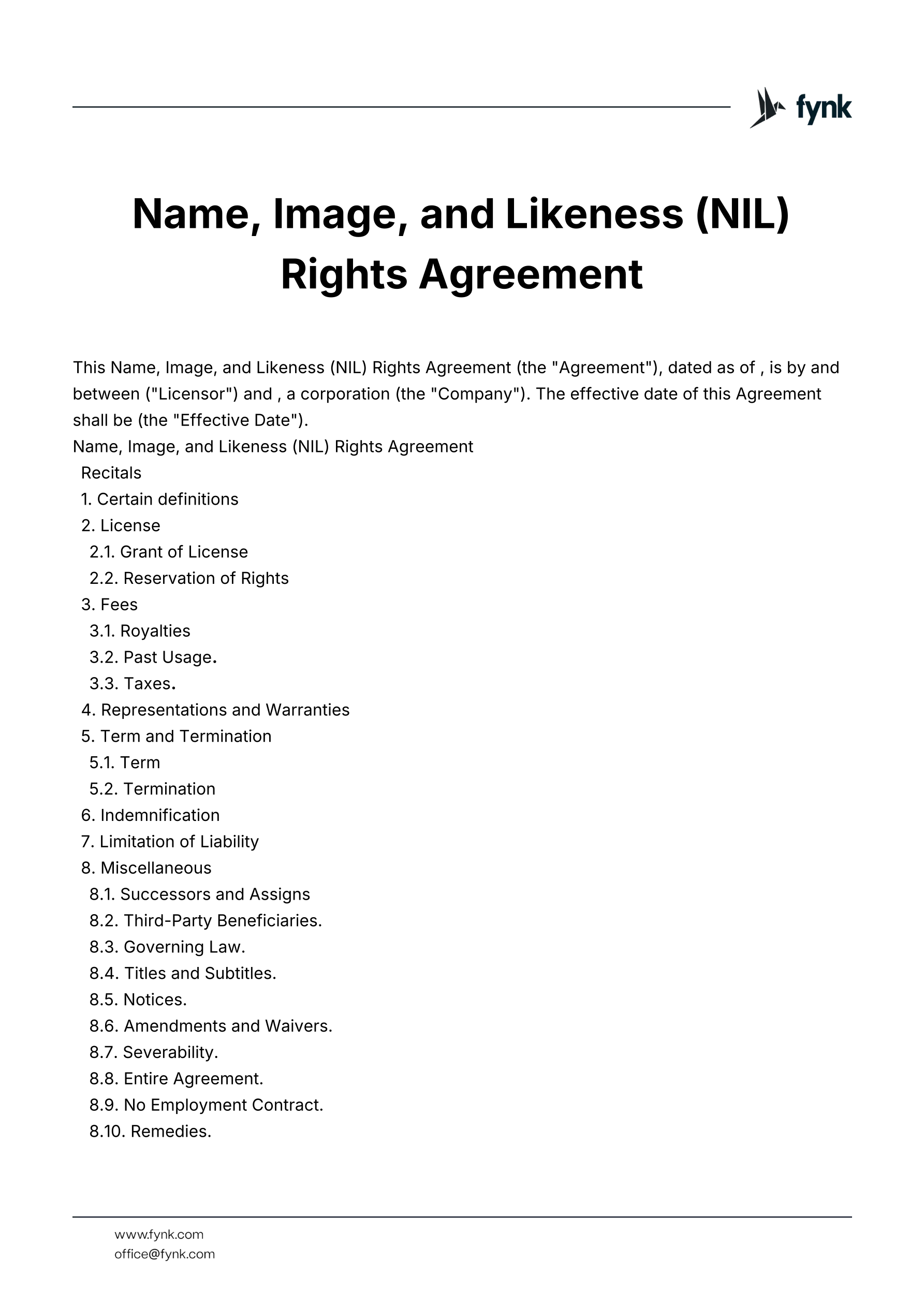Mutual Termination and Release Agreement
RECITALS
This Mutual Termination and Release Agreement (this “Agreement”) is made and entered into as of , by and between , a (“Party A”), and , a (“Party B”) (together, the “Parties”).
A. The Parties are parties to that certain , dated (the “Prior Agreement”).
B. The Parties now desire to terminate the Prior Agreement by mutual agreement.
C. Capitalized terms used in this Agreement but not otherwise defined herein shall have the meanings ascribed to such terms in the Prior Agreement.
Termination
The Parties agree that the Prior Agreement shall terminate and be of no further force or effect as of the close of business on (the “Effective Time”). From and after the Effective Time, neither Party shall have any further rights, duties, or obligations under the Prior Agreement, including without limitation any obligations related to any payments, bonuses, or other compensation described therein.
Indemnification and Insurance
Party A acknowledges that any indemnification agreement dated , between the Parties, shall continue in full force and effect.
Party A agrees to indemnify and hold harmless Party B from and against any and all incurred as a result of:
the Prior Agreement; and/or
any activities or services performed under the Prior Agreement.
This indemnity excludes any losses determined by final judgment to have arisen primarily from bad faith, willful misconduct, or gross negligence by Party B or its affiliates, or from actions knowingly in conflict with the interests of Party A.
Further, Party A shall:
provide reasonable cooperation in connection with any insurance coverage claims made by Party B related to activities performed under the Prior Agreement; and
upon request, assist Party B in obtaining or confirming continued coverage under any applicable insurance policies related to the services provided prior to the Effective Time.
Mutual Release
Each Party, on behalf of itself and its affiliates, agents, representatives, successors, and assigns, irrevocably and unconditionally releases the other Party and its respective affiliates, shareholders, officers, directors, employees, and representatives from any and all , whether known or unknown, disclosed or undisclosed, arising out of or relating to:
the Prior Agreement; and/or
any acts, omissions, or obligations occurring prior to the Effective Time.
“Released Claims” means any and all claims, causes of action, demands, liabilities, obligations, damages, and expenses of any nature, whether based in contract, tort, statute, or otherwise, that arose before the Effective Time. This release does not apply to claims arising from this Agreement.
Each Party covenants not to encourage or support the filing of any claim based on a Released Claim, except as required by legal process.
Non-Disparagement
Each Party agrees not to make or cause to be made any statements, written or oral, that are derogatory or critical of the other Party. This provision does not restrict truthful statements made under legal compulsion or as required by applicable law.
Representations and Warranties
Each Party represents and warrants that:
It has the authority to enter into this Agreement;
This Agreement is valid and binding;
Its execution of this Agreement does not violate any existing agreements; and
It has not transferred or assigned any claims being released under this Agreement.
Attorneys’ Fees
If any Party breaches this Agreement, it shall pay the reasonable attorneys’ fees and costs incurred by the non-breaching Party in enforcing this Agreement.
Third-Party Beneficiaries
This Agreement shall benefit the Parties and any persons or entities released under Section 3.. Such beneficiaries shall have the right to enforce the provisions of this Agreement.
Governing Law; Jurisdiction
This Agreement shall be governed by the laws of , without regard to conflict-of-law principles.
Each Party submits to the exclusive jurisdiction of the courts located in , and waives any objections to venue or personal jurisdiction. Each Party also waives any right to a trial by jury.
Headings
Headings are for reference only and do not affect the meaning or interpretation of this Agreement.
Entire Agreement
This Agreement constitutes the entire understanding of the Parties with respect to its subject matter and supersedes any prior agreements or discussions.
Non-Compete Covenant
For a period of following the Effective Time, and within , Party B agrees not to, directly or indirectly, engage in or participate in any business that competes with the business of Party A, as it existed prior to the Effective Time.
This covenant shall be enforceable by injunction or other remedies available at law or in equity.
Return of Assets and Expense Reimbursement
Party B shall return to Party A all property belonging to Party A, including confidential and proprietary materials (the “Assets”).
Reimbursement for expenses incurred prior to the Effective Time and properly documented shall be made:
Within 0 days of the Effective Time for submissions made prior to the Effective Time, or
Within 0 days of submission for those made after the Effective Time.
Notices
All notices must be in writing and delivered by personal service, overnight courier, certified mail, or electronic means, to the addresses listed below:
Attn:
Attn:
A notice is deemed delivered upon confirmed receipt. Parties may update their contact details by giving notice in accordance with this section.
Severability
If any provision of this Agreement is found to be invalid or unenforceable, the remainder shall continue in full force and effect.
Assignment
No Party may assign this Agreement without the prior written consent of the other Party, except by operation of law.
Binding Effect
This Agreement shall bind and benefit the Parties and their respective successors, permitted assigns, legal representatives, and heirs.
Counterparts
This Agreement may be executed in counterparts, each of which shall be deemed an original, and all of which together shall constitute one and the same instrument.
Amendments and Waivers
No amendment or waiver of this Agreement shall be valid unless in writing and signed by both Parties, which may include signatures transmitted electronically (including via PDF or electronic signature platforms). No waiver of any provision shall constitute a waiver of any other provision or future compliance.
IN WITNESS WHEREOF, The Parties have executed this Mutual Termination and Release Agreement as of .

